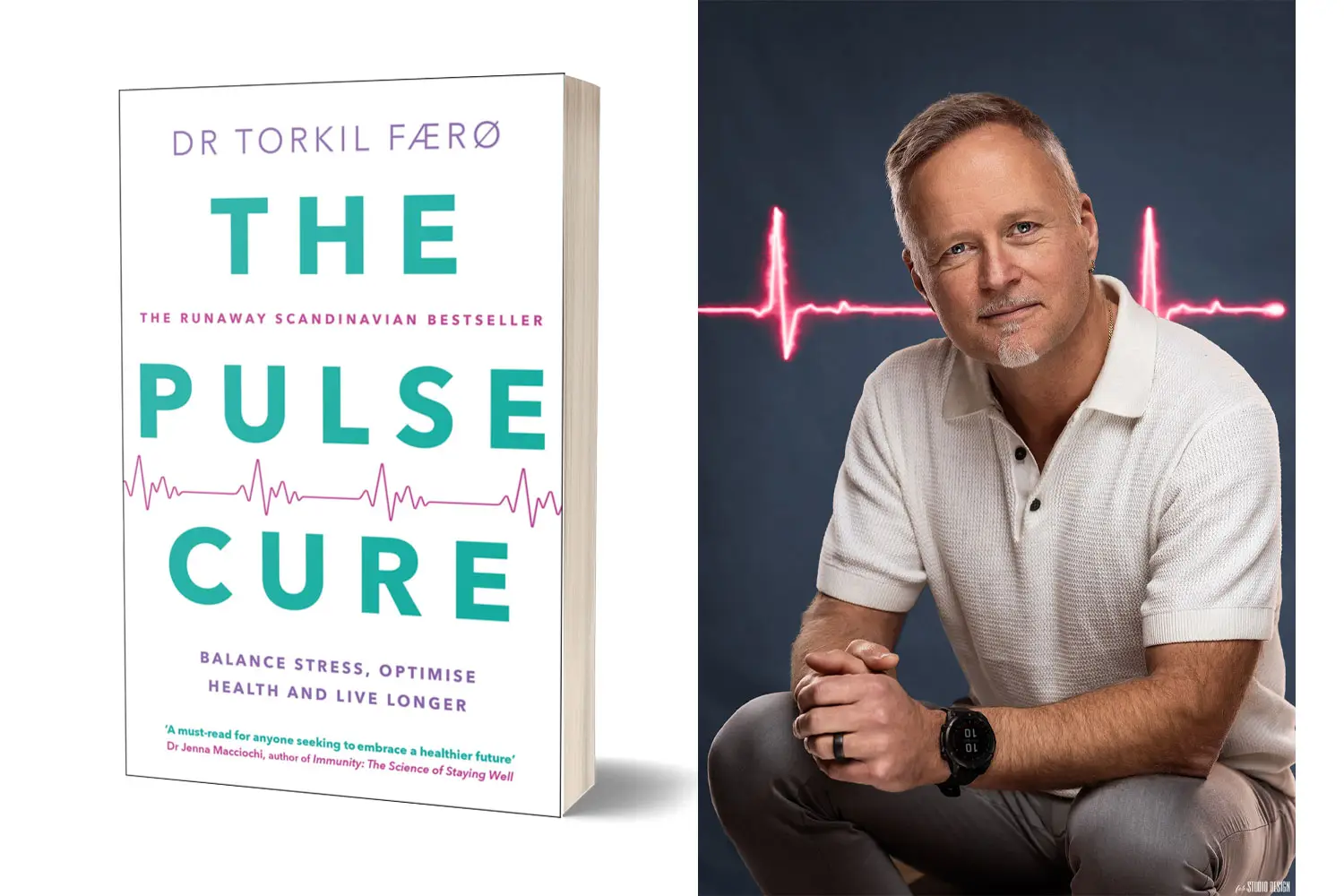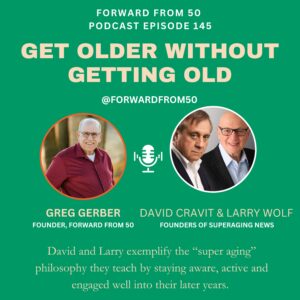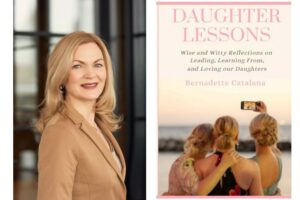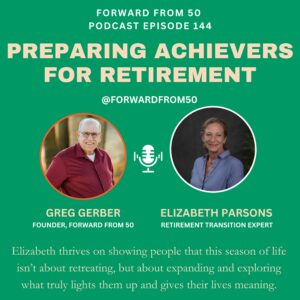When Norwegian physician Torkil Færø turned 40, he realized he was following the same unhealthy path that had cut his father’s life short at age 73.
As a general practitioner and emergency physician, Torkil understood the science behind chronic illness, but it took a personal loss to shift his own mindset. That awakening sparked a journey to radically transform his lifestyle and, in the process, to inspire others to do the same.
Today, Torkil is the author of “The Pulse Cure,” a bestselling book that empowers people to use wearable technology to take control of their health.
His mission is to help people not only live longer, but enjoy more quality years of life. What started as a personal health overhaul has become a national phenomenon in Norway and a growing global movement focused on proactive, science-based wellness.
A dashboard for your physiology
Torkil’s breakthrough came when he started using wearable devices to track his own vital signs. Tools like the Garmin smartwatch, Oura ring and Whoop band opened a window into his internal world.
These devices monitored his heart rate, heart rate variability, sleep quality, oxygen levels and physical activity. For Torkil, it was like gaining a dashboard for his physiology.
“In medicine, we often wait until someone is sick to do something,” he said. “But with this technology, you can prevent illness before it starts. It gives you insight into how your body responds to stress, food, exercise and rest. That’s incredibly empowering.”
By learning how to interpret the data and adjust his habits accordingly, Torkil lost 40 pounds, improved his sleep, nearly eliminated alcohol and regained energy he had not felt in decades.
The transformation was so compelling that his publisher encouraged him to write a book. That book, “The Pulse Cure,” became a big success in Norway, staying on the bestseller list for more than two years.
“If the sales were scaled to U.S. population size, it would be like selling two and a half million copies,” he said. “It completely changed my life.”
The science of adding quality years
Torkil’s work is grounded in personal experience and scientific evidence. He often references a major American study of 700,000 military veterans which found that people who consistently practiced key healthy habits could add an average of 24 years to their lives.
Those habits include:
- Exercising
- Eating well
- Sleeping 7 to 8 hours a night
- Avoiding alcohol and tobacco
- Managing stress
- Nurturing relationships
- Steering clear of opioid misuse
While the concept of healthy living is not new, Torkil believes wearable tech makes it more actionable. By seeing how different behaviors affect their body in real time, people gain motivation to make better choices.
“We’ve always known we should eat healthier, move more and get better sleep,” he said. “But seeing how your heart rate or sleep quality responds to a bad meal or a stressful day helps you connect the dots. It makes those choices real.”
Heart rate variability, in particular, has become a key metric in evaluating stress. Torkil explained that while people can sense external threats, we are not wired to detect internal stress the same way.
Wearables help to bridge that gap. They reveal hidden strain on the nervous system and offer early warnings before illness sets in.
A lifestyle rooted in evolution
Much of Torkil’s advice is based on returning to natural rhythms. He encourages people to embrace more of the lifestyle humans evolved to live.
That includes getting regular exposure to sunlight, spending time in nature, eating whole foods, limiting alcohol and being physically active.
He pointed to a 125-year-old study of First Nation people in North America who, at the time, lived as hunter-gatherers. Their rates of longevity far outpaced those of European settlers, despite lacking modern medicine.
“We are meant to live under the sun, touch the earth and move throughout the day,” Torkil said. “That kind of living supports every system in the body, including the immune system, metabolism and even the brain.”
He also recommends activities that calm the nervous system, like gardening, sewing, reading or walking in green spaces. These practices counterbalance the chronic stress of modern life, which he views as a major driver of disease.
“Stress pushes back the immune system and delays recovery,” he said. “You need calm, restful periods to allow your body to repair and restore itself.”
Even in colder climates or cloudier regions, Torkil encourages people to get outside. Infrared light from the sun, which penetrates clothes and skin, still benefits the body even on gloomy days. Leaves in a forest can also reflect that light back onto the body, which enhances its effects.
Stronger at 50 than at 30
Now in his 50s, Torkil said he feels better than he did in his 30s. He runs multiple times a week, participates in marathons and incorporates cold plunges and saunas into his routine to keep his body adaptable to varying temperatures. These experiences, he believes, train his body to be more resilient.
“Many people assume aging means slowing down and accepting decline,” he said. “But if you treat your body well, you can be stronger and more vibrant in your fifties, sixties and even seventies than you were when you were younger.”
He is quick to add that it is never too late to start. People who adopt healthier habits in their 60s can still gain up to 18 additional years of quality life. That statistic motivates him to share his message with people over 50, who often believe it is too late to change course.
Finding purpose through prevention
What gives Torkil purpose today is not only helping people live longer, but also teaching them how to live well. He believes that everyone deserves to enter their later years with clarity of mind, strength in body and joy in daily life.
“When someone tells me they’ve changed their habits and feel better than they have in years, that’s incredibly meaningful to me,” he said. “I feel like I’m finally doing what medicine is meant to do – keep people healthy.”
By shifting the focus from treatment to prevention, and from pills to personal responsibility, Torkil hopes to inspire a new generation of midlife adults to reclaim their health and vitality.
“Your heart rate can guide you to better health,” he said. “You just have to be willing to listen.”
For more information
To connect with Torkil and learn more about his work, visit:
- Website = www.thepulsecure.com
- Facebook = www.facebook.com/thepulsecure
- Instagram = www.instagram.com/dr.torkil
- LinkedIn = www.linkedin.com/in/torkil-færø-97348b1
- YouTube = www.youtube.com/@TorkilFr
His book, “The Pulse Cure,” is available on Amazon and in other bookstores.
If you order Torkil’s book or one of the wearable devices he recommended from Amazon, Forward From 50 may receive a small commission at no extra cost to you.






